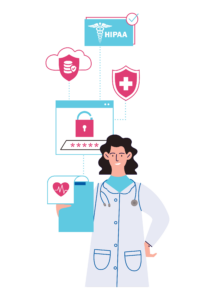Learn the essentials of South Africa's POPIA, its impact on data protection, and how it compares to global privacy laws.
Continuous Security Monitoring
You know cyberthreats never sleep, so why should your security monitoring? Continuous security monitoring is one of the few ways to keep your organization’s data and systems protected 24/7 from the non stop barrage of attacks. As a company holding private information, you need to be on constant alert for new vulnerabilities, update systems as soon as patches become available, monitor logs and network activity for signs of compromise, and respond quickly to any detected incidents. If you’re still relying on periodic vulnerability scans and compliance audits alone to secure your environment, it’s time to make the switch to continuous monitoring. Around-the-clock vigilance is the only way to gain true visibility and control in today’s dynamic threat landscape. Staying one step ahead of cybercriminals requires continuous monitoring.
How are some ways data can be breached?
In brief, implementing continuous security monitoring can lead to a decrease in cybersecurity risk, minimize the impact of successful cyberattacks, and lower the expenses associated with data breaches. This is achieved by effectively addressing the three primary methods through which data may be compromised:
External attacks, where attackers manage to bypass your data protection controls.
Insider attacks, involving trusted employees or insiders intentionally revealing data or falling victim to social engineering attacks like phishing, spear phishing, or whaling.
Supply chain or third-party ecosystem attacks, which occur when vendors expose your critical business data due to the absence of intrusion detection or incident response planning.
What Is Continuous Security Monitoring?
Continuous security monitoring—or CSM—is an exciting approach to cybersecurity that helps keep your systems safe 24/7. Unlike periodic security audits, CSM continually checks for vulnerabilities and threats across your entire IT infrastructure.
With Continuous Security Monitoring, you’ll never miss critical security events again! Specialized tools automatically scan your networks, servers, and endpoints for signs of compromise. As soon as an issue pops up, you’ll receive an alert so you can take immediate action. Talk about a proactive way to stop cybercriminals in their tracks!
Not only does Continuous Security Monitoring help detect threats faster, but it also gives you insights into security risks you may not even realize exist. Detailed reports show trends in your security posture over time so you can make informed decisions about where to focus your efforts. You’ll see weak spots and patch them up before the bad guys find a way in.
The best part? Continuous Security Monitoring solutions are highly automated, so they do all the hard work for you. How’s that for a smart, efficient approach to security?
With Continuous Security Monitoring on your side, you can rest easy knowing your critical data and systems are under constant surveillance. Cyberthreats don’t stand a chance against 24/7 monitoring and rapid response. The future of security is here, and it’s catching threats at the speed of now.
Top Continuous Security Monitoring Tools
You have so many great options for continuous security monitoring tools!
The options for continuous security monitoring tools abound! With the right tool in place, you’ll gain valuable insights and peace of mind knowing your systems and data are protected. Continuous monitoring helps ensure you have a secure environment and can respond quickly in the event of an attack.
Continuous Security Monitoring (CSM) tools empower developers to promptly identify and address security risks in real-time.
These tools gather data from various sources, including network traffic, system event logs, and user activity. Subsequently, the collected data undergoes thorough analysis to detect any indicators of suspicious or abnormal behavior. Upon identifying a potential security threat, the CSM tool generates an alert to prompt appropriate actions.
For optimal performance, CSM tools necessitate constant updates with the latest security intelligence. Additionally, seamless integration with other security tools, such as intrusion detection systems (IDS) and firewalls, is crucial. This integration facilitates a more comprehensive understanding of an organization’s overall security posture, ensuring that potential threats are not overlooked.







